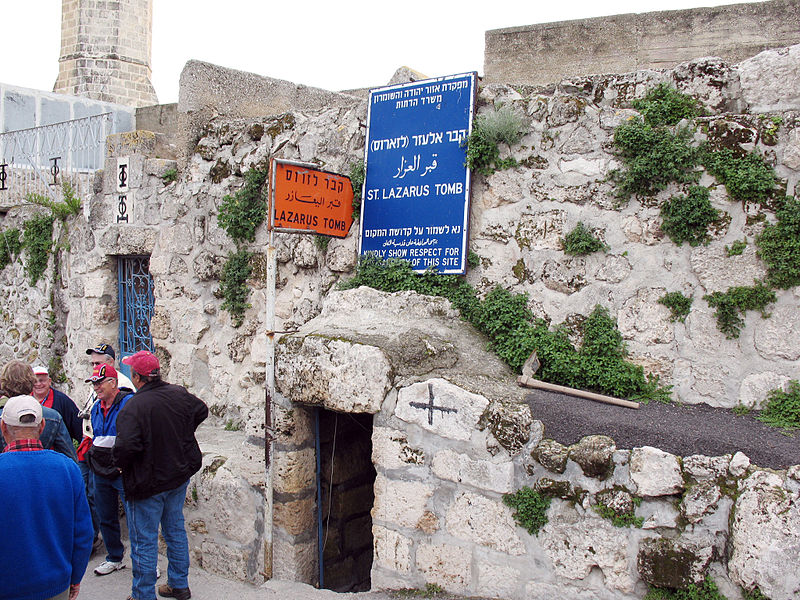17 Mar. The Jewish chief priests plot to kill Jesus
"Many of the Jews, who had come to visit Mary and saw what Jesus did, believed in him. But some of them went to the Pharisees and told them what Jesus had done."
"Then the leading priests and Pharisees called a meeting of the Jewish council [the Sanhedrin]. They asked, 'What should we do? This man is doing many miracles. If we let him continue doing these things, everyone will believe in him. Then the Romans will come and take away our Temple and our nation.'"
"One of the men there was Caiaphas, the high priest that year. He said, 'You people know nothing! You don't realise that it is better for one man to die for the people than for the whole nation to be destroyed.'"
"Caiaphas did not think of this himself. As high priest that year, he was really prophesying that Jesus would die for the Jewish nation and for God's scattered children to bring them all together and make them one."
"That day they started planning to kill Jesus. So Jesus no longer travelled openly among the Jews. He left there and went to a place near the desert, to a town called Ephraim, and stayed there with his followers."
(John 11:45-54)

When Jesus raised Lazarus from the dead, the Jews who had come to mourn with Mary were utterly amazed, and some of the eyewitnesses reported the event to the Jewish council – the Sanhedrin.
The chief priests were afraid that Jesus would start an uprising against the Romans – who might then revoke the powers of the chief priests. Caiaphas, the High Priest, argued that “it is better for one man to die for the people than for the whole nation to be destroyed.” (John 11:50)
So they began to plot to kill Jesus. On hearing this, Jesus left Bethany and withdrew secretly to the village of Ephraim to escape being arrested by the chief priests and Pharisees until the time was right (at the forthcoming Passover Festival).
Bethany (meaning the ‘house of figs’) was the home of Simon ‘the leper’ (see Matthew 26:6-13), and also of Jesus’s friends Mary and Martha, and their brother Lazarus. Their home was only 1½ miles / 2 km away from Jerusalem – a half hour’s walk across the Kidron Valley and over the summit of the Mount of Olives. So it became a convenient place for Jesus to escape from the crowds when he later visited the city for the Passover festival (see John 12:1-11 & Mark 11:11).
A Byzantine church was built here, adjacent to a cave that was identified as the Tomb of Lazarus, in the 4th century (see John 11:38). A second church was built to commemorate the miracle after the church was destroyed in an earthquake during the 6th century. From these churches, a passage cut through the rock gave access to the tomb.
In the mid 12th century, a Benedictine convent and church were built directly over the tomb, but both were in ruins by the 14th century when the original entrance to the tomb was turned into a small mosque (the el-Ozir mosque).
Today, visitors to Bethany (now called al-Eizaraya, meaning ‘home of Lazarus’) can enter the 'Tomb of Lazarus' down steps leading to a new entrance cut through the rock by the Franciscans between 1566 and 1575. The modern Franciscan church, on the site of the 4th century church, was built in 1954, while a Greek Orthodox church was erected on the opposite side of the tomb in 1965.
The photo (by Marion Doss) shows the entrance to Lazarus's tomb at Bethany near Jerusalem.
You can read more about Jesus's raising of Lazarus from death @ https://www.thebiblejourney.org/…/5-jesus…/lazarus-come-out/
